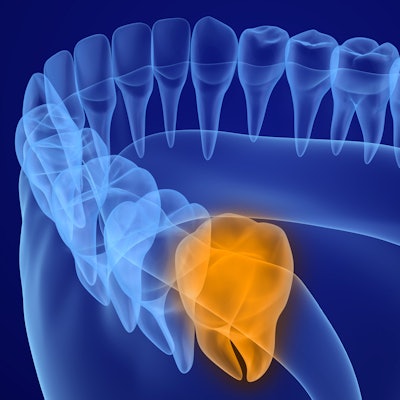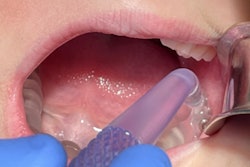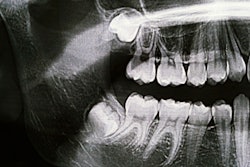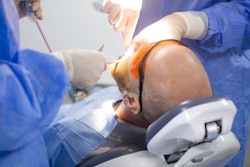
In the future, surgery may no longer be needed to manage wisdom teeth. A 3D-guided microwave ablation procedure removed third-molar tooth buds in pigs in minutes, according to a study published in the Journal of Oral and Maxillofacial Surgery.
The procedure, which is expected to be tested in human clinical trials later this year, demonstrates a potentially less invasive replacement to traditional wisdom tooth extractions, according to the study. It relies on microwave ablation, or microablation, which is widely used to treat tumors.
"Third molar tooth bud ablation procedures resulted in thermocoagulation of the entire volume of targeted third molar tooth bud tissues, with no visual evidence of damage to structures beyond the bony crypt," wrote the study's author, Dr. Leigh Colby, MBA, a private practice dentist and president and CEO of the oral health research and development firm TriAgenics (J Oral Maxillofac Surg, May 23, 2022).
Microwave ablation, which can be used on a range of tissue types without charring them, may hold potential for inducing third-molar agenesis in patients. This minimally invasive procedure could limit surgical risk and improve long-term clinical outcomes compared to current methods for extracting third molars.
To determine whether the procedure could selectively ablate the entire volume of targeted third-molar tooth buds, Colby developed a mandibular split-mouth animal model. The model used five 20-week-old pigs, because their wisdom tooth buds are similar in dimension to humans, according to the study.
Each pig underwent initial x-rays and computed tomography (CT) scans. The imaging was used to locate the animals' left and right mandibular third-molar buds, and software provided tooth bud dimensions from the scans. Custom dental trays fabricated from pig cadaver studies were used to obtain dental impressions, and the impressions and images helped construct custom third-molar tooth bud ablation guides, Colby wrote.
In the second phase of the procedure, the pigs underwent ablation. First, an osteotomy was performed to gain access to the animal's dense cortical bone of the anterior of the ramus. This step is necessary in pigs because medial access to the third-molar tooth bud is not practical due to the pig's narrow, elongated mandible and large tongue, he wrote.
Next, a proprietary microwave ablation probe was inserted into the guide and positioned so that it was in the center of the tooth bud. Once positioned properly in each molar, a microwave energy dose was delivered using microwave radiation at 8 GHz and 5 watts of continuous power for 120 seconds. In prior ex vivo testing using fresh beef liver and pork loin tissues at body temperature, it was estimated that 120 seconds was sufficient in delivering adequate energy to ablate 100% of the tooth bud and dental follicle tissue in pigs, Colby wrote.
After the dose was delivered, the probe was removed, a copper wire x-ray marker was inserted, and another CT scan was taken.
The procedure resulted in completely ablated tooth bud volumes within the zone of thermocoagulation in the five pigs. In addition, postsurgery dissections revealed no damage to collateral tissue, including the developing second-molar tooth bud follicle located less than 1 mm anteriorly and the inferior alveolar neurovascular bundle located 2-3 mm inferiorly from the ablation zone, Colby wrote.
However, the study had limitations, including that a histological analysis was not performed. The bone surrounding the tooth bud was not sectioned to determine if the procedure thermally affected its bony crypt, the author wrote.
Nevertheless, this approach may offer a quick, efficient way to manage third molars while eliminating common postsurgery complications.
"Adaptation of microwave tumor ablation technology, in combination with 3-dimensional x-ray imaging and high precision surgical guides, has the potential to provide an alternative to third molar surgery for many patients," Colby wrote.
Disclosure: Dr. Leigh Colby, the study's author, funded the study.



















